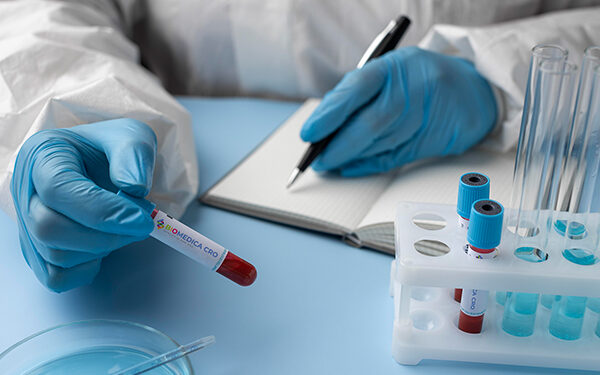Articles are an excellent way to build a relationship with your audience. They can also inspire interactions and drive traffic to your page or website. In this article we understanding the Importance of Human Biospecimens in Medical Research.
These surveys addressed patients’ perceptions of the destination of residual blood and tissue specimens collected during routine clinical care and their attitudes about the ownership, need, and preferred type of consent for secondary research on these specimens.
They Help to Understand Disease
Human biospecimens are natural substances used for medical research from a patient’s body. They can be solid (such as a tissue sample or blood) or liquid (such as urine or saliva). Often, they are accompanied by information (annotation) about the patient from whom they originate. Generally, biospecimens, such as blood tests, surgery, or biopsy, are collected during clinical or surgical procedures to diagnose or treat illness.
Biorepositories are collections of human biospecimens that are centralized, organized, and available for research. They also include facilities and equipment for storing, processing and shipping the biospecimens.
Whether a biorepository is established in the context of a laboratory or as an independent facility, it should be reviewed and approved. They will ensure that researchers and others who use human biospecimens are trained in the appropriate ethical and regulatory requirements for such research.
This will also ensure the research has sufficient scientific and clinical benefits to justify its risks to the subjects involved. This is especially important for research involving a vulnerable population such as children or prisoners.
They Can Be Used for Research
Using human biospecimens for research allows researchers to identify specific cellular characteristics contributing to the disease. This knowledge directly assists drug development by enabling researchers to develop targeted treatments with improved efficacy and safety profiles. This reduces the costs associated with drug development and accelerates the timeline for approval of new medical treatments.
Human biospecimens are collected through a variety of means including, but not limited to, biofluid (blood), tissue examples, cells, urine, feces, etc.; a patient’s clinical records; from volunteers who agree to participate in clinical trials; and by using biospecimens obtained during surgery, biopsy, or other medical procedures. Biospecimens are typically stored in a bio repository for future research studies.
Researchers may utilize human biospecimens for several research purposes, such as studying individual cells, organ/tissue construct models, 2D or 3D in vitro models, disease progression, and identifying biomarkers. Balancing scientific accuracy with cost and efficiency when procuring biospecimens can be challenging. Enlisting the help of a contract research organization (CRO) can be beneficial to assist with finding the best specimens for a particular project.
While legislation in most countries is based on moderate protectionist approaches to the ethical treatment of humans, surveys of newly discharged hospital patients indicate that they are optimistic about secondary research utilizing their healthcare data and biospecimens. Many would allow their information and biospecimen to be used without active consent if it were to advance research in healthcare.
They Can Be Used for Therapy
A human biospecimen is any sample of biological material containing DNA, RNA, protein, or other molecules taken from a person for research purposes. These samples are often collected during diagnostic tests such as blood and urine tests, biopsies, or surgery, but they can also be obtained from voluntarily donated samples.
Biospecimens can evaluate genetic markers indicating how a patient will respond to a specific pharmaceutical or treatment. This is known as pharmacogenomics and has become extremely popular in medicine today. Using these biomarkers can help clinicians make more informed decisions about the appropriate treatments for their patients.
Using human biospecimens to evaluate a specific therapeutic approach can benefit oncology patients, as most new anti-cancer therapies are based on the discovery of a particular marker of tumor in a biopsy sample. Furthermore, these biomarkers are now being applied to various other disease states to develop targeted therapies and improve the efficiency and effectiveness of existing drugs.
A recent study found that newly discharged hospital patients were generally positive about secondary research using their health data and biospecimens, even when conducted without active consent. However, most participants wanted researchers to keep their information private from other healthcare providers for profit-based reasons.
They Can Be Used for Prevention
Research on human biospecimens can help with preventative care by discovering new information that can be translated into future therapies that will stop the disease from taking hold. This is because the differences in biological makeup between individuals can be more clearly distinguished than if the same research was conducted on animals.
Often, the tissue or blood is taken while the person is undergoing a procedure like a biopsy, surgery, or a medical test like a blood or urine test. This means that the patients are already giving their consent to researchers, which is essential in ensuring compliance with federal guidelines on human research.
Biobanks are large storage companies that allow for the collection and preservation of human biospecimens, allowing them to be used by researchers in the future. This is especially useful because new technology may enable the identification of individuals based on their genetic code.
The ethical challenges of using human biospecimens for research must be carefully balanced with the benefits that can be obtained. Clinicians must also take the time to explain the research process to their patients easily and to discuss any risks that might be involved. This can be challenging, particularly in clinical visits where time is a limited resource. The best approach is often a team effort. This can include an oncologist introducing the idea of clinical research during a patient’s appointment, a nurse or research associate who continues to facilitate and educate the patient, and a patient advocate who can help with any concerns.
Read more interesting articles on Tech new master



















